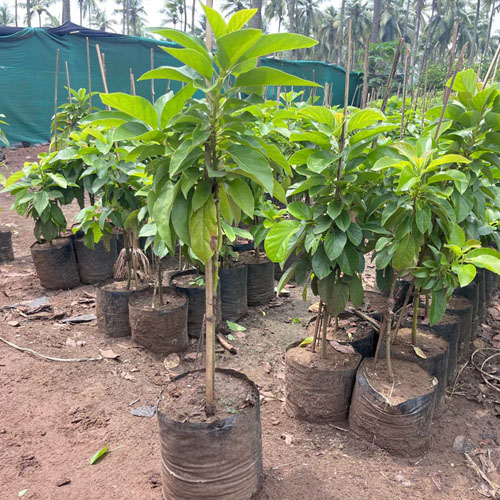Avocado Plants
Avocado (Persea americana) is a tropical and subtropical tree known for its nutrient-rich fruit, commonly referred to as avocado or alligator pear. It is native to Central and South America and has become popular worldwide for its creamy texture and health benefits.
Characteristics of Avocado Plants
-
Size and Growth Habit: Avocado trees can grow to heights of 30-40 feet (9-12 meters) or more, depending on the variety and growing conditions. They have a dense canopy with a broad, rounded shape.
-
Leaves: The leaves are evergreen, lance-shaped to elliptical, and can be 4-8 inches (10-20 cm) long. They are glossy, dark green, and have a leathery texture.
-
Flowers: Avocado trees produce small, inconspicuous flowers that are typically greenish-yellow. The flowers are grouped in clusters and bloom in the spring. They are not particularly showy but are important for fruit production.
-
Fruit: The avocado fruit is a large berry with a leathery skin that can range from green to black when ripe, depending on the variety. The flesh inside is creamy and pale green to yellow. It contains a single large seed.
-
Lifespan: Avocado trees can live and produce fruit for several decades with proper care. They typically begin fruiting 3-4 years after planting, though some varieties may take longer.
Growing Conditions
-
Climate: Avocado trees thrive in tropical and subtropical climates. They prefer warm temperatures and high humidity. They are sensitive to frost and cold temperatures, which can damage or kill the tree.
-
Soil: Avocados grow best in well-draining soils. They prefer slightly acidic to neutral soil (pH 6.0-7.0) and are sensitive to waterlogged conditions. Sandy loam is ideal, but they can adapt to a range of soil types as long as drainage is good.
-
Sunlight: Full sun is essential for avocado trees. They need at least 6-8 hours of direct sunlight per day to ensure healthy growth and fruit production.


